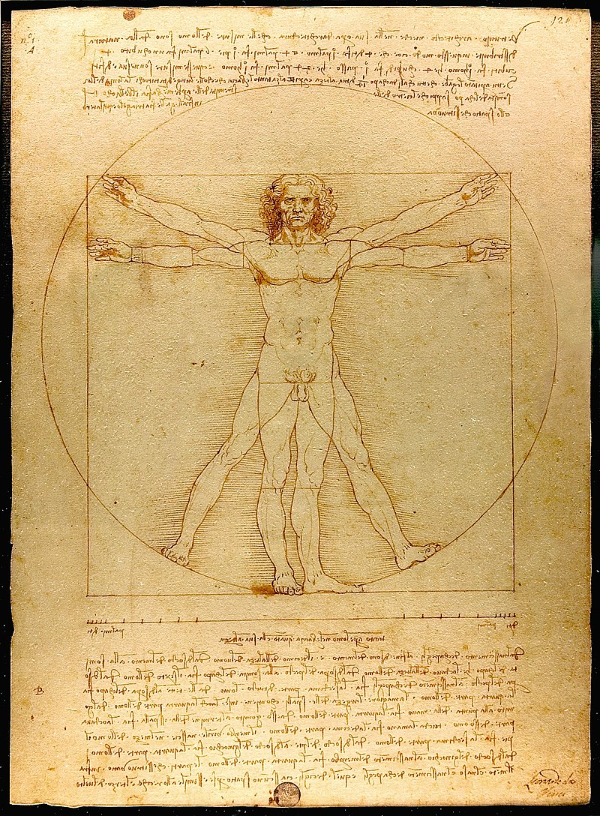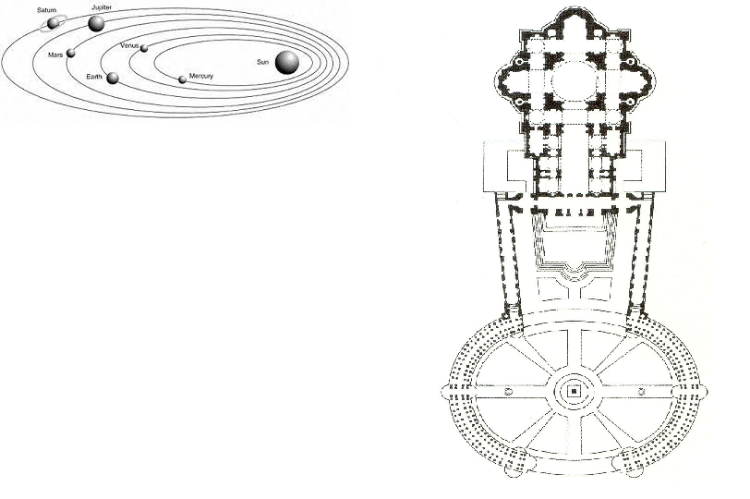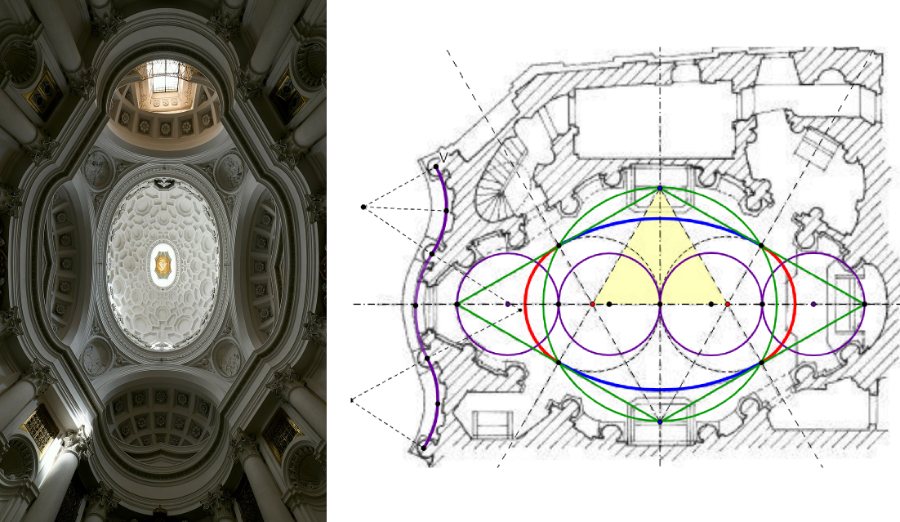
link with Kepler?
renaissance versus baroc
It is tempting to characterise art movementss ans tyles with features that are easy to distinguish. Doing so the renaissance style is often linked to the circle, baroc to the ellipse.
renaissance and the cirkel
The Uomo Vitruviano van Leonardo da Vinci is nice coat reck for renaissance.[br]One drawing refers to Antiquiti, as well as to the circle as perfect basic figure and to Leonardo da Vinci as the personaliaation of the renaissance.

baroc and ellipse
The opposite of the Uomo Universale of da Vinci stands the tandem Bernini-Kepler as iconic contrast.[br]da Vinci is looking back to Antiquity, Bernini joins the scientific revolution of Kepler's worldview and resolutely prefers the ellips. and for St Peters Square supplies the ideal picture.

Unfortunately for one who loves clear contrasts, is reality history is much more fluid than this. [br]In fact the people that studied the oval shape of the Roman amphiathers and designed the first oval schemes themselves were renaissance architects as Sebastiano Serlio (1475-1554). And the first oval churches of Vignola (1507-1573) and Capriano (1535-1594) date from before Kepler's publication in 1609. Even without speaking about practivcle advantages of ovals, analyzing the plans it's obvious that dat architects as Bernini and Borromini stood in a building tradition that was familiar with the use of circles and ovals and just enriched and developed this tradition.[br]An autor as Valerie Shrimplin emphasizes the cosmic interests of Borromini and links both [url=https://www.valerieshrimplin.com/pdfs/20190622-kepler-borromini-and-harmonices-mundi-wide-ppt.pdf]Borromini en Kepler[/url], but it's unlucky that she expicitely points to Borromini's masterpiece San Carlo alle Quattro Fontane, an excellent exemple of the possibilities of circles and ovals and therefore not even an ellipse.[br]A picture of the dome of this church is clearly identificable as an oval.
